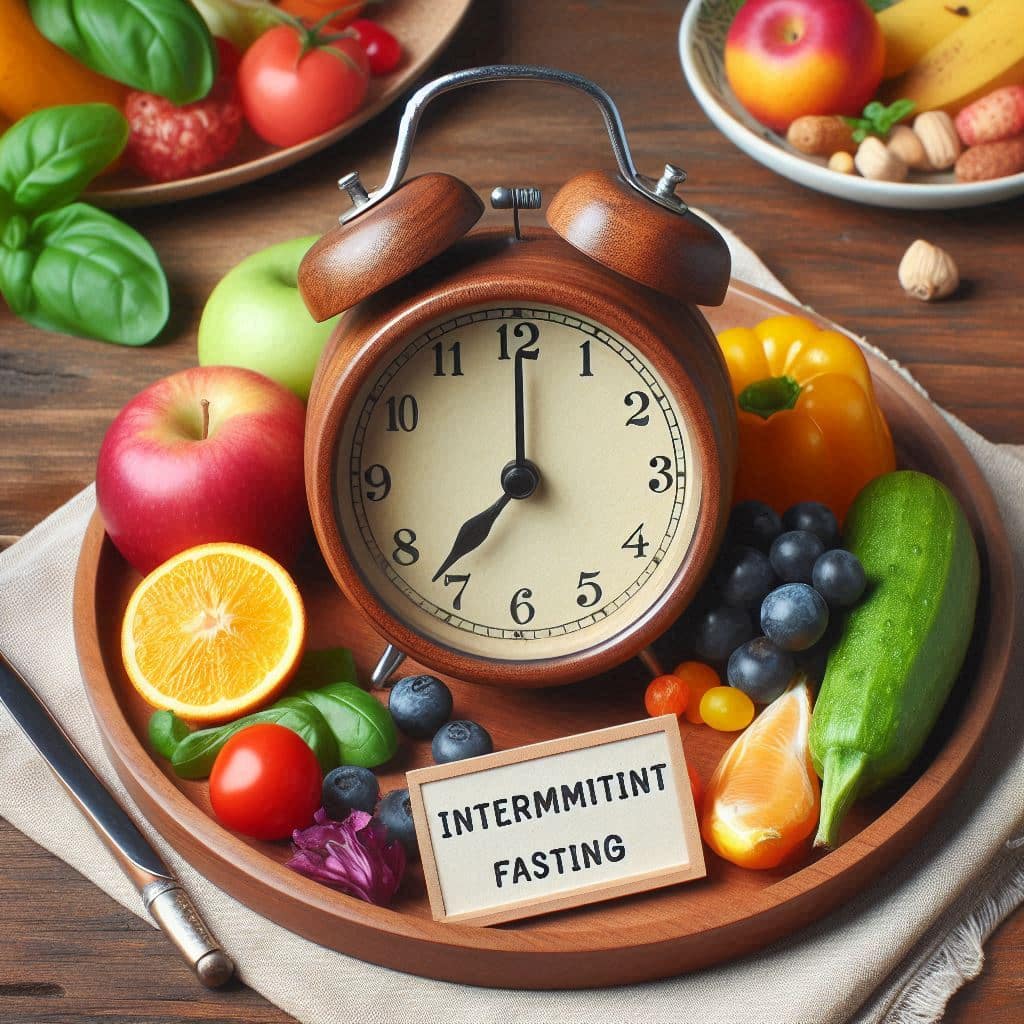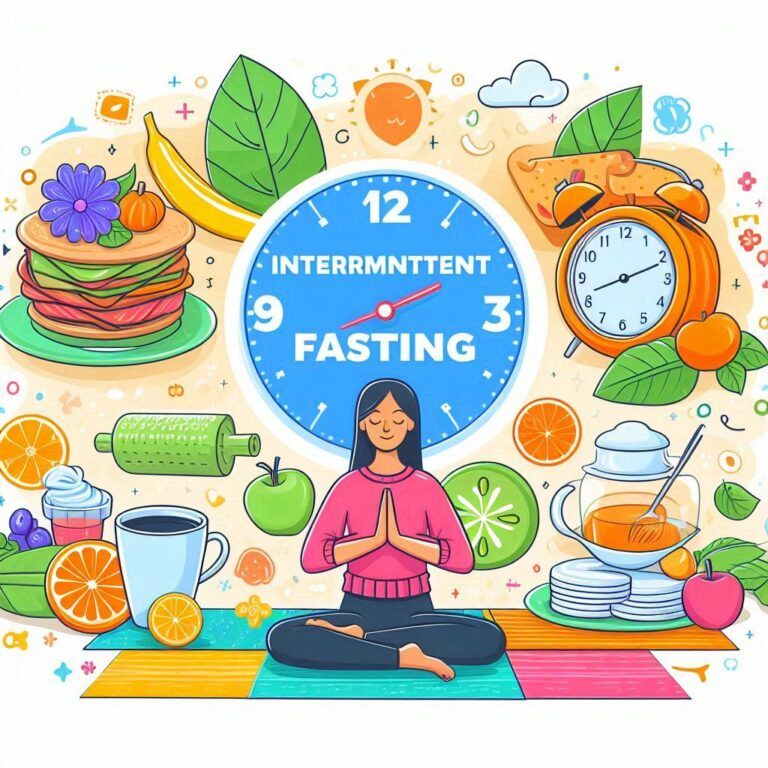How To Intermittent Fast Safely
Today, I will explain how to intermittently fast safely. Intermittent fasting (IF) can be a game-changer for your health. IF isn’t just about losing weight; it’s also about improving metabolic health and boosting overall health and well-being.
But guess what? There are numerous methods, each with its guidelines, but don’t worry too much about picking the ‘perfect’ one immediately. You can constantly adjust your approach down the road.

Disclosure: Please note that some links below are affiliate links, and I’ll earn a commission at no additional cost to you. As an Amazon Associate, I earn from qualifying purchases.
Intermittent fasting (IF) Methods:
16/8 Method
- Description: Fast for 16 hours and eat during an 8-hour window.
- Popularity: This is one of the most popular and accessible methods. Many people start with this Method due to its simplicity.
- Notable Proponents: Dr. Jason Fung, who wrote “The Obesity Code,” is a significant advocate for intermittent fasting, including the 16/8 method.
18/6 Method
- Description: Fast for 18 hours and eat during a 6-hour window. This typically means having two meals within six hours and fasting for 18 hours. For example, one might eat from 12 PM to 6 PM or 1 PM to 7 PM.
- Popularity: While less common than the 16/8 method, the 18/6 method is gaining popularity among those who benefit from a more extended fasting period. It’s often chosen by individuals already accustomed to intermittent fasting and looking to deepen their practice for potentially more incredible benefits.
- Benefits: Weight Loss: Longer fasting periods can help with calorie restriction, potentially leading to more significant weight loss.
- Notable Proponent: As a leading advocate for intermittent fasting, Dr. Fung’s work can be applied to various fasting durations, including 18/6. He emphasizes the benefits of more extended fasting periods for improving insulin sensitivity and promoting weight loss.
5:2 Diet
- Description: Eat normally five days a week, and on two non-consecutive days, restrict calorie intake to 500-600 calories.
- Popularity: This Method gained widespread attention due to its flexibility and has been featured in various books and media.
- Notable Proponent: Dr. Michael Mosley popularized this Diet in his book “The Fast Diet.”
Eat-Stop-Eat
- Description: Fast for 24 hours once or twice a week.
- Popularity: This Method is less frequent but can be more challenging due to the extended fasting period.
- Notable Proponent: Brad Pilon, who wrote the book “Eat Stop Eat,” is the key advocate of this Method.
Alternate-day fasting (ADF)
- Description: Alternate between normal eating and fasting days or very low-calorie intake (about 500 calories).
- Popularity: Known for its disciplined approach, which has proven effective in supporting weight loss and enhancing metabolic health.
- Notable Proponents: Dr. Krista Varady has researched and written the book “The Every-Other-Day Diet.”
Warrior Diet
- Description: Fast for 20 hours with small snacks of raw fruits and vegetables and eat one large meal at night within a 4-hour window.
- Popularity: Appeals to those who prefer to eat one large meal per day.
- Notable Proponent: Ori Hofmekler introduced the Warrior Diet in his book “The Warrior Diet.”
Choose something that resonates with you and fits into your daily life. If you have a packed schedule, specific fasting methods seem more manageable than others. It’s crucial to align your choice with not just your goals but also your lifestyle.
And remember, incorporating something new into your life should be a gentle transition. If you’re new to fasting, start slow. Begin with a shorter period, like a 12-hour fast, then incrementally increase it. This isn’t a race; it’s about forming habits that stick and are comfortable for your body.
In the next section, ‘Essentials of Nutritional Balance and Hydration,’ I’ll show you how to tackle the fasting journey with hydration and balanced meals, setting you up for a successful and healthy fasting experience.
Essentials of Nutritional Balance and Hydration
I will level with you: nutrition and hydration can break or make your intermittent fasting. It’s not just about clocking the hours without food; what you do during your eating windows counts.

Staying hydrated is your top priority during the fasting period. You’re going to find out that water becomes your best friend. Besides plain water, drink herbal teas and other non-caloric beverages. They’ll help you stay hydrated without breaking your fast and can be pretty comforting when hunger pangs hit.
This isn’t just about staying hydrated; it’s also about the quality of your meals once you’re in your eating phase. If you want to reap all the benefits of intermittent fasting, focus on nutrient-rich meals. Ensure your meal combines colorful vegetables, fruits, healthy fats, lean proteins, and whole grains.
Now, avoiding overeating once you’re allowed to eat is a no-brainer. But sometimes, the temptation to binge can feel overwhelming. Don’t worry too much about the occasional slip-up; you can constantly adjust your approach. Consistency in eating balanced, nutritious foods will anchor your intermittent fasting success.
Just don’t focus too much on perfection. Choose meals that resonate with you and make you feel good. That’s the strategy I like to leverage. Remember, your first attempt at meal planning doesn’t need to be your last. It’s all about that balance.
Tuning into Your Body’s Signals
I will tell you a secret: the key to successful intermittent fasting lies in being in tune with your body. It’s not just about watching the clock until your next meal; it’s about observing how you feel during your fasting and eating windows. Paying attention to your body’s signals is a skill you develop over time, and it helps ensure you’re fasting safely and sustainably.
You might experience some initial discomfort, like increased hunger or slight fatigue � . This is normal. Your body is adjusting to a new eating pattern. However, if you’re dealing with severe hunger pangs, dizziness, or overwhelming fatigue, these are signals not to ignore. It might mean you need to revisit your fasting approach, and there’s no harm in that. It’s better to adjust your plan than to risk your health.
So, how should you exercise when fasting? I’m here to guide you. Maintaining your exercise routine while intermittent fasting is generally okay, but listen to what your body tells you. If you’re feeling low on energy, especially when just starting to fast, consider lighter exercises, moving your workouts to your eating periods, or just before you break your fast.
And here’s something crucial: intermittent fasting isn’t for everyone. If you’re pregnant or breastfeeding, you’ll need those extra calories for your little one. People with a history of eating disorders or certain chronic illnesses might find that fasting might complicate their condition. In these scenarios, the guidance of a healthcare professional is essential.
The following section will discuss why consistency is essential. Don’t worry too much about getting it perfect the first time. Like any lifestyle change, fasting can continually be refined and improved.
Pathway to Lasting Wellness: Navigating Your Intermittent Fasting Journey
Congratulations on embarking on the intermittent fasting journey—a powerful tool for transforming your health and lifestyle. Focusing on several key factors is essential to ensure lasting success with intermittent fasting (IF).
Consistency and Balance: Consistency is the bedrock of effective intermittent fasting. Stick to a regular fasting schedule that suits your lifestyle and commitments. Pair fasting with a balanced diet rich in nutrients to support your body’s needs.
Hydration and Health: Stay hydrated throughout your fasting period. Water, herbal teas, and other non-caloric beverages can help maintain hydration levels and support your overall well-being.
Stress Management: To effectively manage stress, include relaxation techniques like meditation or deep breathing exercises. Stress can impact your fasting experience and health, so finding ways to unwind is crucial.
Quality Sleep: Quality sleep is vital for your body to rejuvenate and function optimally. Ensure you get enough rest each night to complement your fasting routine.
Healthcare Professionals: Consult with a healthcare professional if you have health issues or take medications. They can personalize your fasting plan to ensure it’s safe and effective for your needs.
Special Considerations: Factors like pregnancy, breastfeeding, or specific health conditions require special attention when practicing intermittent fasting. Always prioritize your well-being and adjust your fasting approach accordingly.
Continuous Adjustment: Your fasting journey is a dynamic process. Constantly adjust your approach according to your body’s feedback and health goals. Progress, not perfection, is critical to achieving lasting wellness.
If you liked this blog post, read How To Break A Fast In Intermittent Fasting – Calorie Lifestyle.
Engage with Me!
Ask Questions: Following these guidelines and staying attuned to your body can achieve sustainable health and well-being through intermittent fasting. Feel free to ask if you have any questions or want further advice on fasting safely!








Wow, I am practicing the Eat Stop Eat method and didn’t even know about it! I’m currently fasting once a week. I do a full water fast during 24 hours once a week. I must say it’s very challenging but it’s also very rewarding because I’m eating a lot these days. It also allows me to be lighter because I connect spiritually with God during this special day. Thanks for this advice on intermittent fasting, it helped me a lot!
Hi Angelce,
That’s wonderful to hear!
The Eat Stop Eat method can be very physically and spiritually rewarding. Fasting for 24 hours once a week is a significant achievement, and it’s great that you’re finding both physical benefits and a deeper spiritual connection through this practice.
I’m glad the advice on intermittent fasting has been helpful to you. Feel free to reach out if you have any questions or need more tips on managing your fasting routine. Keep up the great work, and enjoy the benefits of your fasting journey!
Best regards,
Michael
Hi!
Great post! Intermittent fasting can indeed be transformative for health beyond just weight loss. I appreciate the detailed breakdown of different methods and the emphasis on starting slow and adjusting based on individual needs. Staying hydrated and focusing on nutrient-rich meals during eating windows are crucial tips for maintaining balance and well-being.
What are your thoughts on exercising during fasting periods, especially for beginners?
– Scott
Hi Scott,
Thank you for your feedback! I’m glad you found the post informative.
Exercising during fasting periods can vary based on individual preferences and goals. For beginners, starting with light to moderate exercise is often recommended to gauge how their body responds. Activities like walking, yoga, or low-intensity cardio can be suitable.
As you become more accustomed to fasting, you may find that your energy levels adjust, allowing for more intense workouts like (HIIT). However, listening to your body and prioritizing hydration and nutrient intake before and after exercise is essential to support recovery and prevent fatigue.
Finding the right balance between fasting and exercise depends on individual tolerance and goals.
Thank you for your comment.
I wish you the best,
Michael
I enjoyed this article, especially learning about the different IF routines. The warrior diet intrigued me. Can you tell me more about it, please? I think it might originate in Japan. Also, I have a congestive heart condition, so which of these diets is the best for someone like me? I take lots of medication to thin my blood, so I need to be careful. Have you ever advised someone with my condition before?
I have tried IF in the past. One diet I used allowed brown rice in small quantities twice a day. I lost so much weight, but I was not well in the end. Have you heard of brown rice fasting?
Thanks you!
Hi Linden,
I’m glad you enjoyed the article! The Warrior Diet is indeed intriguing. It involves fasting for 20 hours and eating within a 4-hour window, often focusing on one large meal in the evening. This method emphasizes high-quality, nutrient-dense foods during the eating period. Although the name suggests a Japanese origin, it was popularized by Ori Hofmekler, a former Israeli Special Forces soldier.
Given your congestive heart condition and the need to be cautious with your medications, it’s essential to consult with your healthcare provider before starting any fasting regimen. They can offer personalized advice and ensure your safety. I haven’t advised anyone with your condition before, so a medical professional’s guidance is crucial.
Brown rice fasting is a type of fasting in which brown rice is consumed in small quantities. While some people have experienced weight loss with this method, it’s essential to maintain a balanced diet to ensure overall health and well-being.
Please prioritize your health and work closely with your healthcare team to find the best approach for you.
Thank you for reaching out, and I wish you the best on your health journey!
Best,
Michael
This is a great comprehensive guide to intermittent fasting, Michael! I especially appreciate the detailed breakdown of different methods, as it can be overwhelming to choose one as a beginner.
I’m curious about your experience with the 16/8 method. How long did it take you to adjust to the fasting window, and what benefits have you noticed? Also, any tips for managing hunger pangs during the fasting period?
Thanks for sharing your expertise!
Hi Rich,
Thank you for your kind words! I’m glad you found the guide helpful.
Regarding the 16/8 method, it took me about two weeks to fully adjust to the fasting window. I experienced some hunger pangs during the initial days, but drinking plenty of water and herbal teas helped a lot. Over time, my body got used to the new eating schedule.
As for benefits, I noticed improved mental clarity, increased energy levels, and weight loss. My digestion also seemed to improve, and I felt less bloated overall.
Here are a few tips for managing hunger pangs during the fasting period:
Stay hydrated – water, herbal teas, and black coffee can help suppress appetite.Keep busy – staying occupied can distract you from hunger.Gradually extend your fasting window. If you’re struggling, try gradually increasing the fasting period until you reach 16 hours.Eat nutrient-dense meals during your eating window, ensuring you stay full longer.
I hope this helps, and thanks again for reaching out! E-mail me if you need any more info.
All the best,
Michael
“How To Intermittent Fast Safely” by Michael Crossman is a well-rounded guide that educates readers on the benefits and methods of intermittent fasting while prioritizing safety, flexibility, and individualized adaptation. It serves as a valuable resource for anyone looking to explore or optimise their intermittent fasting journey.
What are your recommendations for adjusting exercise routines to align with intermittent fasting, especially for individuals starting out with this lifestyle change?
Hello, S.J.
Thank you for your comment!
When adjusting exercise routines to align with intermittent fasting, especially for beginners, it’s essential to consider a few key recommendations:
Timing: Schedule your workouts during the eating window or shortly after breaking your fast to ensure you have enough energy and nutrients for optimal performance and recovery.
Intensity: Start with moderate to low exercise if you’re new to fasting. This helps avoid overexertion, especially during the fasting period when your energy levels may be lower.
Hydration: Stay well-hydrated throughout the fasting period and during workouts to maintain performance and support overall health.
Nutrient Timing: If you prefer working out in a fasted state, consider consuming a small amount of protein or branched-chain amino acids (BCAAs) before exercising to help preserve muscle mass.
Listen to Your Body: Pay attention to how your body responds to exercise during fasting. If you feel excessively tired or dizzy, adjust your workout intensity or shift your exercise routine to align better with your eating schedule.
By gradually adjusting your exercise routine and listening to your body’s signals, you can effectively integrate intermittent fasting into your lifestyle while supporting your fitness goals.
All the best,
Michael
Dear Mike,
I read your article “How To Intermittent Fast Safely” with great interest. Your comprehensive guide provides valuable insights into various intermittent fasting methods and offers practical advice for those looking to incorporate this practice into their lives.
I appreciate how you’ve structured the information, making it accessible and easy to understand for readers at different stages of their fasting journey.
Your overview of intermittent fasting methods (16/8, 18/6, 5:2, Eat-Stop-Eat, Alternate-Day Fasting, and the Warrior Diet) is beneficial. By providing descriptions, popularity levels, and notable proponents for each method, you’ve given readers a solid foundation to start their research and choose an approach that best suits their lifestyle and goals.
I commend your emphasis on listening to one’s body and starting slowly. This advice is crucial, especially for those new to fasting. Your suggestion to begin with shorter fasting periods and gradually increase the duration is a sensible approach to help people adapt more comfortably to this dietary change.
The section on nutritional balance and hydration is precious. You rightly point out that food quality consumed during eating windows is just as important as fasting. Your advice to focus on nutrient-rich meals and stay Allwell-hydrated is spot-on and often overlooked in discussions about intermittent fasting.
I appreciate your honesty in addressing potential challenges, such as the temptation to overeat when breaking a fast. Your reassurance that occasional slip-ups are normal and consistency is key is realistic and encouraging.
Your advice on exercise during fasting periods is balanced and sensible. Acknowledging that people may need to adjust their workout routines when starting intermittent fasting shows a nuanced understanding of the practice.
The section on safety considerations is crucial. You rightly point out that intermittent fasting isn’t suitable for everyone, particularly pregnant or breastfeeding women and those with certain health conditions. Encouraging readers to consult healthcare professionals when necessary is responsible advice.
Your concluding section on keys to success summarizes the essential factors for sustainable intermittent fasting. The emphasis on consistency, hydration, stress management, quality sleep, and continuous adjustment is excellent.
Your article provides a balanced, informative, and encouraging guide to intermittent fasting. You’ve done a thorough research and have a good understanding of the subject. Your writing style is engaging and accessible, making complex information easy for your readers to digest.
Thank you for sharing this valuable resource on intermittent fasting. Many readers will find it helpful in their health and wellness journeys.
All the best,
Eric
Dear Eric,
Thank you for your thoughtful and detailed feedback on my article ” How to Intermittent Fast Safely.” I’m thrilled to hear that you found the guide insightful and practical. It’s important to me that readers at various stages of their fasting journey can easily understand and apply the concepts.
Your kind words motivate me to continue providing valuable and accessible content.
I appreciate your support and encouragement. I wish you all the best on your health and wellness journey!
Warm regards,
Mike
Hi, this is a great article and helped me understand the different intermittent fasting options. I have done a combination of the 16/8 window and also the Eat-Stop-Eat, mainly to try to reduce blood sugar levels and kickstart my aging metabolism. I have found intermittent fasting helps reduce my sugar cravings as well.
Kind regards
Diana
Hi Diana,
Thank you for your kind words!
I’m glad the article helped you understand the different intermittent fasting options. It’s great that you’ve tried the 16/8 window and Eat-Stop-Eat methods to manage blood sugar levels and boost metabolism.
Feel free to contact me if you have any more questions or need further advice on your fasting journey. I wish you continued success with your health goals!
Kind regards,
Michael
Great article on intermittent fasting! I love how you break down the different methods makes it easy to understand. The focus on starting slow and staying hydrated is super helpful, especially for newbies. The tips on balancing meals and not stressing over slip-ups are spot on. Thanks for sharing such practical advice in a way that’s easy to follow!
Hi,
Thank you for your kind words! I’m glad you found the article on intermittent fasting helpful. My priority was to break down the different methods in an easy-to-understand way, and I’m pleased that it resonated with you.
Starting slow and staying hydrated is crucial, especially for beginners. I appreciate your feedback and am happy to share practical, easy-to-follow advice.
Thanks for reading and sharing your thoughts!
Best regards,
Michael